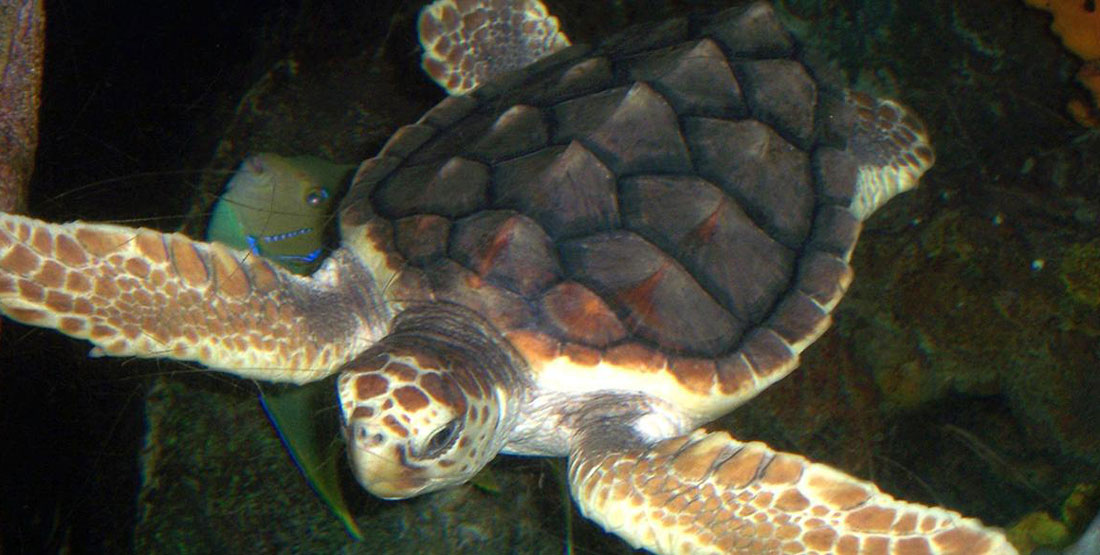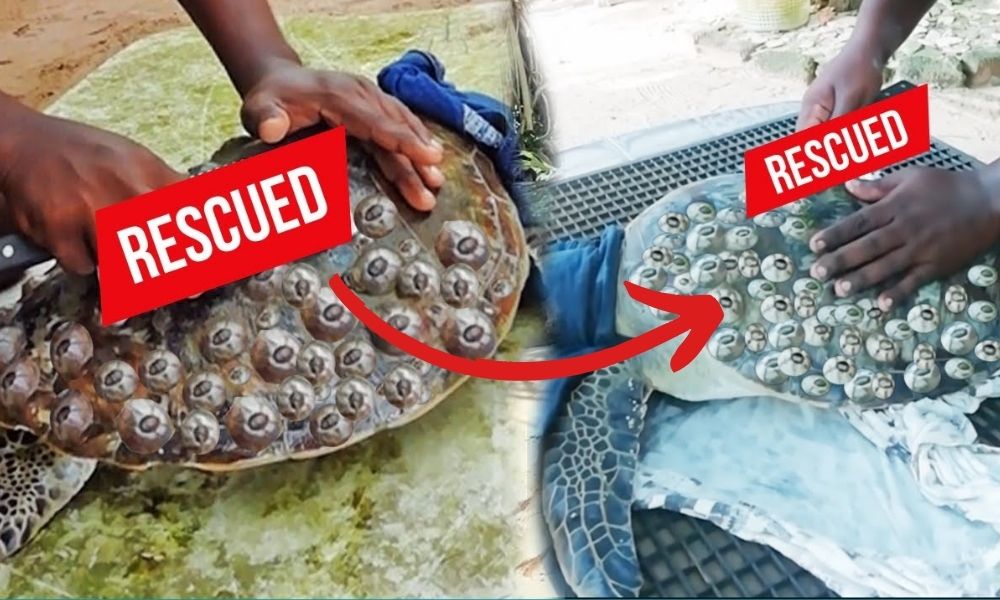Sea turtles are vertebrates. They have backbones and a skeletal structure.
This makes them part of the vertebrate group of animals. Sea turtles are fascinating creatures. They have been around for millions of years and play a vital role in marine ecosystems. Their long migrations and unique life cycles capture the interest of scientists and nature lovers alike.
Understanding whether sea turtles are vertebrates or invertebrates helps us better appreciate their biology. It also aids in their conservation. This knowledge is crucial for protecting these majestic animals and ensuring their survival for future generations. Let’s dive deeper into what makes sea turtles vertebrates and explore their unique characteristics.
Sea Turtles
Sea turtles are fascinating creatures that have captured human interest for centuries. These ancient reptiles play a vital role in marine ecosystems. To understand more about them, let’s dive into their world, starting with an introduction to sea turtles.
Brief History
Sea turtles have been around for over 100 million years. They survived the age of dinosaurs and have adapted to many changes in their environment. Today, seven species of sea turtles exist, each with unique traits and habits.
Key Characteristics
Sea turtles are vertebrates, meaning they have a backbone. This is one of their defining features. Here are some key characteristics:
- Shell: Sea turtles have a hard, protective shell. It is divided into two parts: the carapace (top) and the plastron (bottom).
- Limbs: Their limbs are flippers, designed for swimming long distances.
- Respiration: Sea turtles breathe air using lungs. They can hold their breath for several hours.
- Diet: Their diet varies by species. Some eat jellyfish, while others prefer seagrass or algae.
Sea turtles have a unique lifecycle. They start as eggs laid on beaches. Once hatched, the young turtles make their way to the sea. They face many threats but continue to survive due to their remarkable adaptations.
| Species | Diet | Habitat |
|---|---|---|
| Green Sea Turtle | Seagrass, algae | Tropical and subtropical waters |
| Leatherback Turtle | Jellyfish | Open ocean |
| Hawksbill Turtle | Sponges, anemones | Coral reefs |

Classification Of Sea Turtles
Sea turtles are fascinating creatures that have roamed the oceans for millions of years. Understanding their classification helps us appreciate their unique place in the animal kingdom. Let’s dive into the classification of sea turtles and uncover some interesting facts.
Taxonomy Basics
Taxonomy is the science of naming and classifying organisms. Sea turtles belong to the animal kingdom. They are in the phylum Chordata, which includes animals with a spinal cord. Within this phylum, sea turtles fall under the class Reptilia. This class includes reptiles such as snakes, lizards, and crocodiles.
Sea turtles are further classified into the order Testudines. This order includes all turtles and tortoises. Within this order, sea turtles belong to two families: Cheloniidae and Dermochelyidae. The Cheloniidae family includes six species of hard-shelled sea turtles. The Dermochelyidae family has only one species, the leatherback sea turtle.
Vertebrate Or Invertebrate?
Sea turtles are vertebrates. This means they have a backbone. The backbone is part of their internal skeleton, which provides support and protection. Unlike invertebrates, which lack a spinal column, vertebrates have a well-developed nervous system.
The backbone of a sea turtle is unique. It is fused to their shell, providing extra protection. This shell is made of two parts: the carapace (top) and the plastron (bottom). The fusion of the backbone and ribs to the shell is a distinctive feature of turtles.
Invertebrates, such as jellyfish and insects, do not have a backbone. They rely on other structures for support. Sea turtles, with their strong backbone and shell, are well-equipped for life in the ocean.
Anatomy Of Sea Turtles
Sea turtles are fascinating creatures with unique anatomical features. Their anatomy helps them thrive in the ocean. From their strong shells to their powerful muscles, every part serves a purpose.
Skeletal Structure
Sea turtles have a distinctive skeletal structure. They are vertebrates, meaning they have backbones. Their shells are part of their skeleton. The upper part is called the carapace. The lower part is the plastron. Both parts are connected by bony structures called bridges. This gives them a rigid and protective framework.
Muscular System
Their muscular system is designed for swimming. Strong muscles attach to their flippers. These muscles help them glide through water. They can cover long distances with ease. Their neck muscles are also strong. This allows them to move their head in and out of their shell.
Vertebrates Defined
Vertebrates are animals with a backbone or spine. This backbone provides structure and support. It also protects the spinal cord. Most vertebrates have a complex nervous system. They also have a well-developed brain. Vertebrates include many familiar animals.
Understanding vertebrates helps us learn about sea turtles. Let’s explore the key traits and examples in nature.
Key Traits
Vertebrates share several key traits. First, they have a backbone. This backbone is made of bones or cartilage. Second, they have an internal skeleton. This skeleton supports their body. Third, vertebrates have a central nervous system. This system includes the brain and spinal cord. Lastly, most vertebrates have a closed circulatory system. This means their blood flows inside vessels.
Examples In Nature
Many animals are vertebrates. Examples include mammals, birds, reptiles, amphibians, and fish. Mammals like humans, dogs, and whales are vertebrates. Birds, such as eagles and sparrows, also have backbones. Reptiles like snakes and lizards are vertebrates too. Amphibians include frogs and salamanders. Fish, such as salmon and goldfish, are vertebrates as well.
Sea turtles are reptiles. They are vertebrates with backbones. Their backbone helps them swim and dive. Understanding their traits helps us protect them.
Invertebrates Defined
Understanding the differences between vertebrates and invertebrates can help us classify sea turtles. Invertebrates are a diverse group of animals that do not have a backbone. This section will explore the key traits and examples of invertebrates in nature.
Key Traits
- No Backbone: Invertebrates lack a vertebral column.
- Exoskeletons: Many have a hard outer shell for protection.
- Diverse Forms: They come in various shapes and sizes.
- Simple Nervous System: Their nervous systems are less complex than vertebrates.
- High Reproduction Rates: Invertebrates often reproduce quickly and in large numbers.
Examples In Nature
| Type | Characteristics |
|---|---|
| Arthropods | Include insects, spiders, and crustaceans. They have jointed limbs and segmented bodies. |
| Mollusks | Include snails, octopuses, and clams. They often have soft bodies and some have shells. |
| Echinoderms | Include starfish and sea urchins. They have a unique water vascular system. |
| Worms | Include earthworms and leeches. They have elongated, soft bodies. |

Sea Turtles In The Ecosystem
Sea turtles are ancient creatures. They have roamed the oceans for millions of years. These fascinating animals play a critical role in marine ecosystems. Understanding their place in the ecosystem helps to appreciate their importance and the need for conservation efforts.
Role In Marine Life
Sea turtles are key players in marine life. They help maintain the health of seagrass beds and coral reefs. Seagrasses serve as nurseries for many marine species. Sea turtles graze on these grasses, ensuring they do not become overgrown and die.
Coral reefs benefit from sea turtles too. Hawksbill turtles eat sponges that compete with corals. This helps coral reefs stay healthy and vibrant. Healthy coral reefs are vital for many marine organisms. They provide food and shelter for fish, crabs, and other sea creatures.
Conservation Status
The conservation status of sea turtles varies by species. Many are endangered or critically endangered. Human activities like pollution, fishing, and coastal development threaten their survival. Climate change also impacts their nesting sites and food sources.
Efforts are ongoing to protect sea turtles. Conservation programs focus on protecting nesting sites, reducing bycatch, and cleaning up beaches. Supporting these efforts is crucial for the survival of these amazing creatures. Every action counts towards a better future for sea turtles.
Scientific Studies On Sea Turtles
Sea turtles have fascinated scientists for decades. Their life, behavior, and anatomy offer valuable insights. One key question is whether they are vertebrates or invertebrates. Scientific studies play a crucial role in answering this question.
Recent Research
Recent studies have made significant discoveries about sea turtles. Researchers use advanced technology to study their skeletal structure. These studies confirm that sea turtles have a spine, making them vertebrates.
Scientists also examine their genetic makeup. DNA analysis provides more evidence of their vertebrate status. These findings help understand their evolutionary history.
Findings And Implications
These findings have broad implications. Understanding sea turtles’ vertebrate nature helps in conservation efforts. Protecting their habitats becomes more effective with this knowledge. Studies also reveal their role in marine ecosystems.
Conserving sea turtles ensures the health of these ecosystems. Their vertebrate status highlights their importance. Scientists continue to study sea turtles for more insights. Each discovery adds to our understanding of these fascinating creatures.
Frequently Asked Questions
Are Sea Turtles Vertebrates Or Invertebrates?
Sea turtles are vertebrates. They have a backbone and an internal skeleton. This is a key characteristic of vertebrates.
What Type Of Animals Are Sea Turtles?
Sea turtles are reptiles. They belong to the order Testudines. They are cold-blooded and lay eggs.
Do Sea Turtles Have A Backbone?
Yes, sea turtles have a backbone. This is part of their internal skeletal system, typical of vertebrates.
How Are Sea Turtles Classified?
Sea turtles are classified as vertebrates. They belong to the class Reptilia. Their classification is based on their physical characteristics.
Conclusion
Sea turtles are fascinating creatures. They are vertebrates, having a backbone. This makes them part of the reptile family. Understanding their anatomy helps in their conservation. Protecting sea turtles ensures ocean health. So, appreciate these amazing animals. They play an important role in our ecosystem.
Let’s continue to learn and protect them.





Leave a Reply